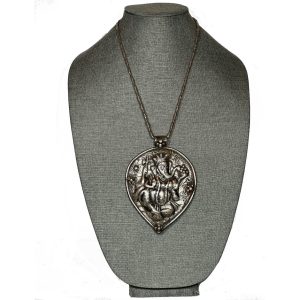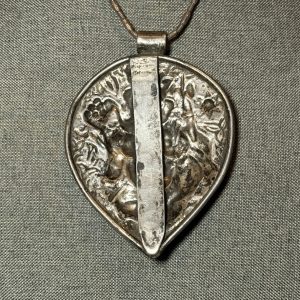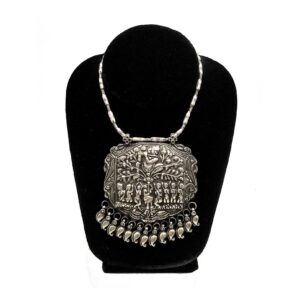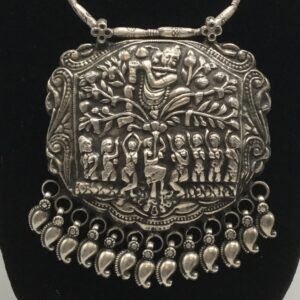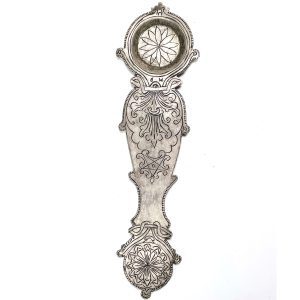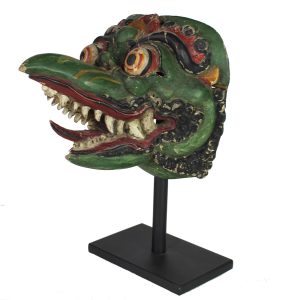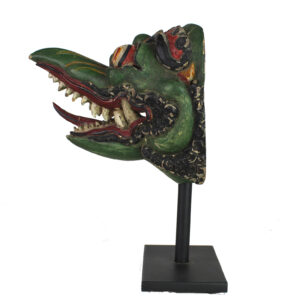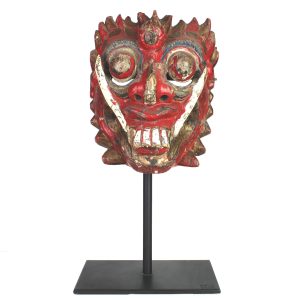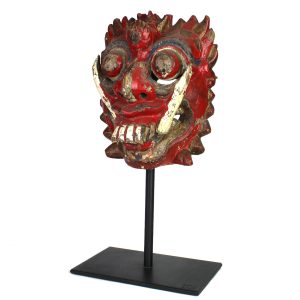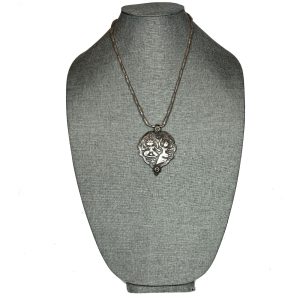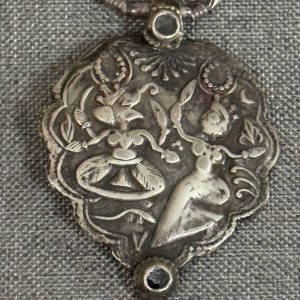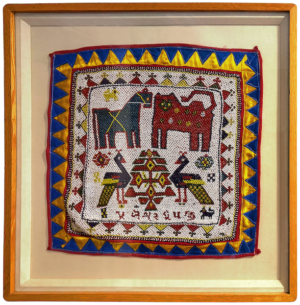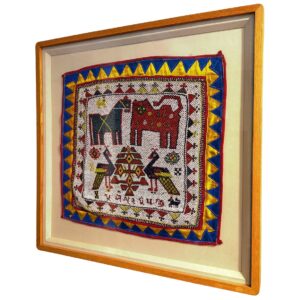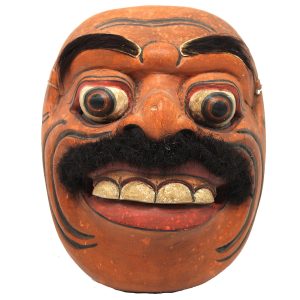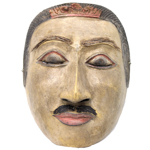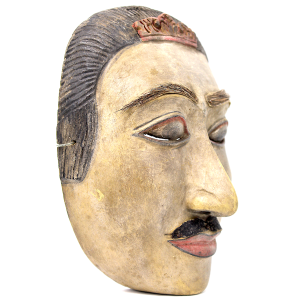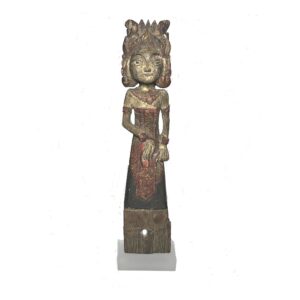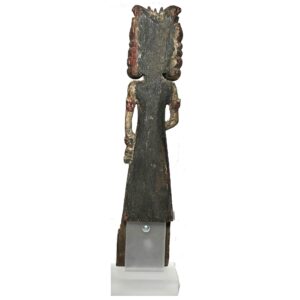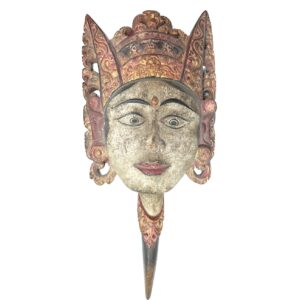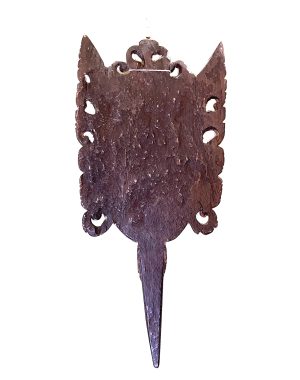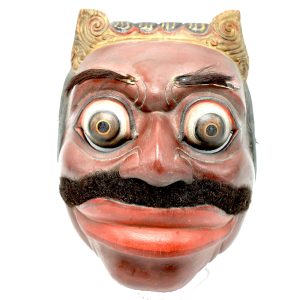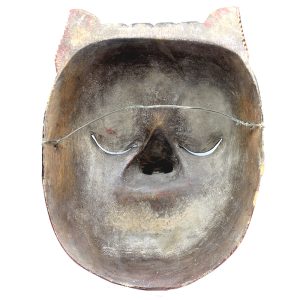Showing 13–24 of 29 results
-
Sale!


$440.00 Original price was: $440.00.$375.00Current price is: $375.00.
Ht: 5.125″ W: 3.75″ D: 0.625″ | FREE SHIPPING within continental U.S.
Large and heavy silver pendant with 4 armed Ganesh in betel shape frame reaching for his favorite treat modak sweet dumplings with coconut. As the remover of obstacles Ganesh pendants worn for good luck . The coin silver chain is included.
-
Sale!


$695.00 Original price was: $695.00.$595.00Current price is: $595.00.
Ht: 3.625” W: 3.5” D: .75″ | FREE SHIPPING WITHIN CONTINENTAL U.S.
Rare antique high grade silver amulet, high relief of Lord Krishna sitting in the Tree of Life playing his flute serenading the Gopis. Truly magnificent pendant symboling Hindu belief in the interplay between deities and the human soul.
-
Sale!


$225.00 Original price was: $225.00.$175.00Current price is: $175.00.
H: 6.25 ” W:1.625 ” D:.25 ” | FREE SHIPPING WITHIN CONTINENTAL U.S.
Antique silver puja spoon used to offer water to the gods to show respect. Hindus use water to cleanse and purify one’s body, mind and spirit. The lotus symbolizes Lakshmi, the Goddess of wealth and prosperity.
-
Sale!


$775.00 Original price was: $775.00.$675.00Current price is: $675.00.
H: 13.75″ W: 3″. D: 3.75″ | CALL 213-568-3030 OR EMAIL [email protected] FOR SHIPPING.
Featured in the original Spiderman movie, this rare vintage Balinese mask of Jatayu was used in Ramayana performances. He is the Hindu vehicle of Vishnu, one of the principal Hindu Gods triad. On a museum quality stand.
-
Sale!


$975.00 Original price was: $975.00.$775.00Current price is: $775.00.
H: 8.26″ W: 7.25″ D: 6″ | CALL 213-568-3030 OR EMAIL [email protected] FOR SHIPPING
Dance mask of Rangda, sacred Balinese demon-queen with 2 upper and lower fangs, scary teeth, jagged facial elements, menacing eyes, deep red. Featured in Spiderman 2002 movie on museum quality metal stand.
-
Sale!


$195.00 Original price was: $195.00.$150.00Current price is: $150.00.
Ht: 2.75”. W: 2.5” D: 0.25” 1.3oz. | FREE SHIPPING WITHIN THE CONTINENTAL U.S.
Rare silver pendant of joyful dancing Ganesh with Parvati framed within a betel shape with scalloped edges. Probably crafted and sold at a temple, it was worn for protection rather than good luck.
-
Sale!


$495.00 Original price was: $495.00.$395.00Current price is: $395.00.
H: 30″ W: 29.5″ D: 2.125″ | CALL 213-568-3030 OR EMAIL [email protected] FOR SHIPPING
Vintage beadwork tapestry with many auspicious Hindu symbols: Tree of Life, Monkey God Hanuman, a horse and pair of peacocks together symbolizing the cycle of life, spiritual growth, enlightenment, divine wisdom and beauty. Used in many Indian celebrations, they are also placed at home doorways and thresholds symbolizing warmth, positivity, and protection and invite blessings to the home.
-
Sale!


$110.00 Original price was: $110.00.$0.00Current price is: $0.00.
H: 7.625″ W: 6.125″ D: 3.375″ | FREE SHIPPING within continental u.s.
Most jauk keras (strong, scary) masks of a giant are often red or orange to reinforce a volatile dance with jerky movements. This jauk manis (good, sweet) mask dance is a more controlled, regulated and enacted with more calm and human movements.
-


$105.00
This Dalem is a traditional folk-art and ethnic mask (topeng) from Bali made from pulai wood of a Hindu king (Dalem). He stares directly at the viewer while his high cheeks help express his poise and the ability to remain cool in a crisis. This is a fine example of a gifted carver able to…
-
Sale!


$395.00 Original price was: $395.00.$325.00Current price is: $325.00.
Ht: 14.5” W: 3.5” D: 2.25” | FREE SHIPPING WITHIN CONTINENTAL U.S
Rare vintage carving dedicated to Dewi Sri, Balinese Goddess of Rice. was probably made for a home shrine or small rice field temple . Hole near the bottom indicates it may have been part of a larger decorative scheme.
-
Sale!


$295.00 Original price was: $295.00.$225.00Current price is: $225.00.
H: 14.5″ W: 6.625″ D: 2.375″ | FREE SHIPPING WITHIN CONTINENTAL US
Rare and very fine vintage woodcarving of Dewi Sri Balinese Hindu goddess of rice and prosperity in excellent condition considering it is a much used piece. Depicted as a young, attractive and fertile woman with highly decorative headdress. Can be mounted on a wall.
-


$125.00
This ethnic and folk-art Bali legendary court minister (topeng patih) is performed in a special mask dance named Topeng Panjegan, as only one dancer interprets five different characters wearing full face masks preventing speech. Patih manis (Sweet Minister) is often the first solo dance after a gamelan orchestra introduction, and this patih keras (strong minister)…
End of content
End of content

